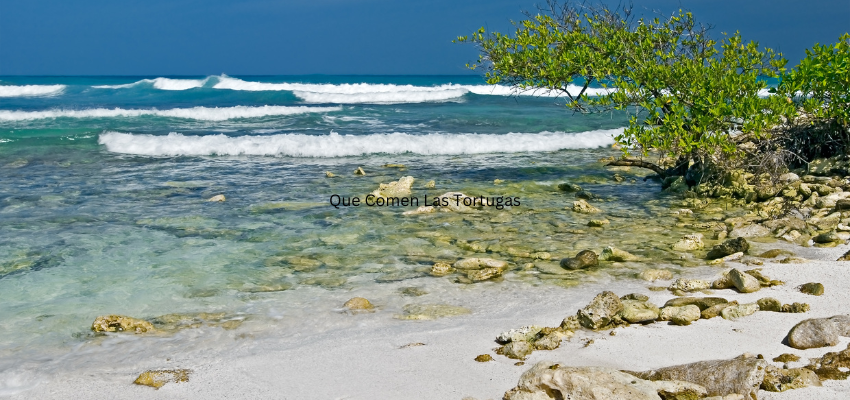The Ultimate Guide to Que Comen Las Tortugas

Introduction to Tortugas and Their Diet
Welcome to the ultimate guide on one of nature’s most fascinating creatures – las tortugas! These gentle reptiles, known as turtles in English, captivate us with their graceful movements and intriguing habitats. But have you ever wondered what exactly these beautiful creatures eat? In this blog post, we will dive deep into the world of tortugas and explore their diets both in the wild and as pets. Whether you are a turtle enthusiast or considering getting one as a companion, understanding what que comen las tortugas is essential for their health and well-being. So let’s embark on this culinary adventure together and uncover the secrets behind a nutritious diet for our shelled friends! Get ready to discover some surprising facts about what makes these amazing creatures tick (or should we say snap?) when it comes to food!
What Do Tortugas Eat in the Wild?
Tortugas, or turtles, have a diverse diet that varies depending on their species and habitat. In the wild, these creatures are opportunistic omnivores, meaning they eat both plants and small animals.
The primary food source for many tortugas is aquatic vegetation such as algae, seaweed, and water lilies. These leafy greens provide essential nutrients like fiber and vitamins. Some tortuga species also consume fruits and berries found near bodies of water.
In addition to plant matter, tortugas will happily munch on insects, worms, snails, and even small fish if given the chance. This animal protein is crucial for their growth and development. They use their sharp beak-like mouth to capture prey while swimming or hunting on land.
Interestingly enough, some turtle species have been observed eating carrion – dead animals they come across in their environment. While this may sound unusual to us humans, it serves as an important part of nature’s recycling system.
Overall (as per instruction not to conclude), a varied diet rich in both plants and protein is key to keeping our wild tortuga friends healthy and thriving!
The Importance of a Balanced Diet for Tortugas
Tortugas, like any other living beings, require a balanced diet to thrive and stay healthy. A well-balanced diet provides them with the necessary nutrients, vitamins, and minerals they need for growth and overall well-being.
 A balanced diet for tortugas typically includes a variety of foods such as leafy greens, vegetables, fruits, insects, and even some types of protein. These foods offer different nutritional benefits that help support their immune system and promote proper digestion.
A balanced diet for tortugas typically includes a variety of foods such as leafy greens, vegetables, fruits, insects, and even some types of protein. These foods offer different nutritional benefits that help support their immune system and promote proper digestion.
Leafy greens are an essential component of a tortuga’s diet as they provide valuable fiber which aids in digestion. Foods like kale, collard greens, and dandelion leaves are rich in vitamins A and C. These vitamins contribute to the development of strong shells while boosting the immune system.
Vegetables such as carrots and bell peppers add diversity to their diet by providing additional vitamins like vitamin K. Fruits like strawberries or watermelon can be given occasionally as treats due to their high sugar content.
Insects play a crucial role in the natural feeding behaviors of tortugas. They provide much-needed protein which supports growth and development. Foods like crickets or mealworms can be offered as occasional snacks but should not make up the majority of their diet.
It is important to remember that balance is key when it comes to feeding your pet tortuga. Providing them with a varied selection of nutrient-rich foods will ensure they receive all the necessary nutrients for optimal health.
Always consult with a veterinarian who specializes in reptiles if you have any concerns about your tortuga’s specific dietary needs or if you are unsure about certain food items that may be harmful to them.
Foods to Avoid Feeding Your Pet Tortuga
When it comes to feeding your pet tortuga, it’s important to know what foods are off-limits. While these reptiles may seem like they can eat just about anything, there are certain foods that can be harmful or even toxic to them.
First and foremost, never feed your tortuga any type of processed or canned food. These contain additives and preservatives that can wreak havoc on their delicate digestive systems. Stick to fresh, natural foods instead.
It’s also crucial to avoid feeding your pet tortuga any dairy products. Tortugas are not designed to process lactose, so giving them milk or cheese could lead to stomach upset and diarrhea.
Another food group you should steer clear of is citrus fruits. The high acidity in fruits like oranges and lemons can cause digestive issues for your tortuga.
Additionally, avoid feeding your pet tortuga anything with a high salt content. Too much salt can dehydrate them and disrupt their electrolyte balance.
Stay away from plants that are toxic for turtles such as rhubarb leaves and avocado pits.
Remember, providing a safe and nutritious diet for your pet tortuga is essential for their overall health and well-being. By being mindful of the foods listed above that should be avoided, you’ll help ensure a long and happy life for your shelled friend!
How to Create a Nutritious Diet for Your Pet Tortuga
Creating a nutritious diet for your pet tortuga is essential to ensure their health and wellbeing. Just like humans, tortugas require a balanced and varied diet to thrive. Here are some tips on how to create a nutritious diet for your pet tortuga.
It’s important to understand that different species of tortugas have slightly different dietary requirements. Research the specific needs of your particular tortuga species to ensure you are meeting its nutritional needs accurately.
A good base for your pet tortuga’s diet is fresh leafy greens such as dandelion greens, kale, and collard greens. These provide important vitamins and minerals that are vital for their overall health.
 In addition to leafy greens, include other vegetables in your pet’s diet such as carrots, bell peppers, and cucumbers. These can be offered in small quantities as occasional treats or mixed with the leafy greens.
In addition to leafy greens, include other vegetables in your pet’s diet such as carrots, bell peppers, and cucumbers. These can be offered in small quantities as occasional treats or mixed with the leafy greens.
Protein is also an important component of a tortuga’s diet. Offer them small amounts of cooked lean meats like chicken or turkey on occasion. You can also provide commercial turtle pellets or freeze-dried insects specifically formulated for turtles.
It’s crucial to avoid feeding your pet tortuga foods that are toxic or harmful to them. Foods like avocados, onions, garlics should never be given as they can cause serious health issues.
Always remember that hydration is key! Provide clean freshwater in a shallow dish at all times so that they can drink whenever they need it.
By following these guidelines and regularly consulting with a veterinarian specialized in reptiles or exotic pets if needed ensures you’re providing an optimal nutrition plan tailored specifically for your beloved pet Tortuaga!
Tips for Feeding Your Tortuga
Feeding your tortuga can be an enjoyable and rewarding experience. Here are some tips to ensure that you provide the best nutrition for your shelled friend.
1. Variety is key: Just like humans, tortugas enjoy a diverse diet. Offer them a mix of fresh vegetables, such as leafy greens, carrots, and bell peppers. Don’t forget to include some fruits like strawberries or melons as treats!
2. Calcium is crucial: Tortugas need calcium for healthy shell growth and overall well-being. Ensure they have access to calcium-rich foods, such as kale or collard greens. You can also provide them with cuttlefish bone or crushed eggshells.
3. Avoid processed food: While it might be tempting to feed your tortuga commercial turtle pellets, these should only make up a small portion of their diet if at all. Fresh foods are always the best option.
4.Feed in appropriate portions: Overfeeding can lead to obesity in tortugas which can affect their health adversely.
Try not to exceed their recommended portion sizes based on their age and size.
5.Water matters too! Remember that tortugas need access to clean water at all times for drinking and soaking purposes.
Consider providing a shallow dish where they can easily climb in and out without any risks of drowning.
By following these simple tips, you will help ensure that your pet tortuga enjoys a nutritious diet that promotes good health and longevity!
Conclusion
Understanding what tortugas eat is essential for their overall health and well-being. These fascinating creatures have unique dietary needs that should be met to ensure they thrive in both the wild and captivity.
In the wild, tortugas primarily consume a diet of plants, insects, and small aquatic animals. It’s important to replicate this varied diet as closely as possible when feeding pet tortugas. Offering a combination of leafy greens, vegetables, fruits, and high-quality commercial turtle pellets can help provide the necessary nutrients they require.
Remember to avoid certain foods that can be harmful or even toxic to tortugas. Foods such as dairy products, processed foods with additives or preservatives, as well as fatty meats should never be fed to your pet. Additionally, it’s crucial not to overfeed your tortuga; portion control is key!
Creating a balanced and nutritious diet for your pet tortuga requires careful consideration of its specific species’ dietary requirements. Researching their natural habitat and consulting with a veterinarian experienced in reptile care can provide valuable insights into providing an optimal diet.
When feeding your pet tortuga, always ensure fresh water is readily available for drinking and soaking purposes. Regularly clean their enclosure and replace any uneaten food promptly to maintain hygiene standards.
By following these guidelines on what que comen las tortugas (what turtles eat), you’ll be able to promote good health in your beloved shelled friend while enhancing their quality of life!




